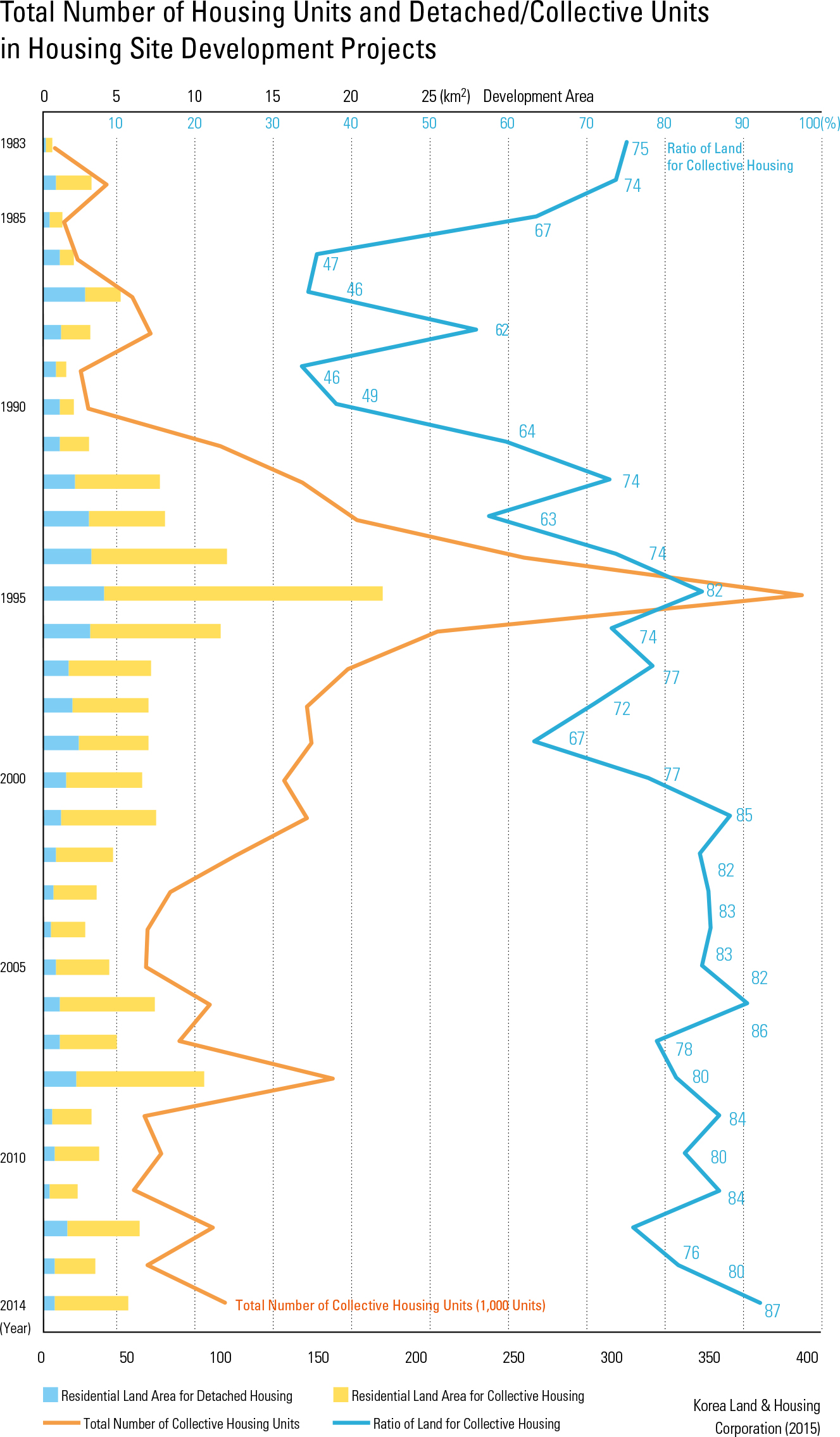English III
The Housing Site Development Promotion Act was legislated in 1980 in response to increased demand for housing sites after an intense period of industrialization and urbanization during the 1970s. The law was introduced to overcome the limits of land adjustment projects and supply land for housing faster at a lower price by developing large areas in a well-planned fashion. The first sites developed under this law in 1981 include Gaepo-dong and Godeok-dong in Seoul, Al- lak-dong in Busan, and Songhyun-dong in Daegu. As of 2014, a total of 723 housing sites had been designated and 603 residential districts had been established since 1981. Until 2014, a total of 408,144,000 m2 was de- veloped for housing sites, representing 2.4% of the total urban land area (16,773,818,000 m2) in Korea. The number of residents who live in these housing sites reached 4.5 million households or 14.900 million people, which is 21.5% of the en- tire population and 23.5% of the total urban pop- ulation. In sum, approximately 2 out of 10 people in Korea live in the housing sites supplied by housing site development projects. About 38.1% of housing site development projects were per- formed in Gyeonggi-do, which surrounds Seoul, followed by Seoul (8.5%, 34.644 million m2) and Daejeon (6.6%, 26.860 million m2). Housing site development projects divide land areas into housing parcels and public facilities parcels, and land use plans are prepared according to different criteria. Housing parcels include sites for collective housing units, detached housing units, and community facilities. The proportions of these different categories are carefully planned. As of 2014, housing site development projects had provided 41.041 million m2 of detached hous- ing sites and 126.222 million m2 of collective housing sites. The land set aside for collective housing units is overall almost 3.1 times larger than land for detached housing units. The alloca- tion between detached and collective housing was similar between 1985 and 1990, but since then more land has been allocated for construction of collective housing units. Since 2000, the ratio of land provided for detached and collective housing has reached 2:8. The ratios of land for collective housing units in Seoul and Busan are 95% and 91%, respectively, indicating high-density urban development taking place in both cities. The ratio in rural areas, where development pressure is lower, ranges between 40% and 60%, re ecting medium-low urban den- sity.
page_2 |


